As this is the last day of the year 2020 I originally intended to have this article moved to the “product test”-category. The plan was to write about using and testing a real distress signal – because, honestly, I haven´t done it up until now and I am curious. On the other hand, firing distress signals over their “best before” is a kind of sailor´s tradition (at least I know of many doing it this way) to getting rid of the “old” signals on New Year´s Eve. Additionally, looking back to 2020 with all that Covid-craziness and political stuff going on, the past year deserves to be fired at with a big caliber …
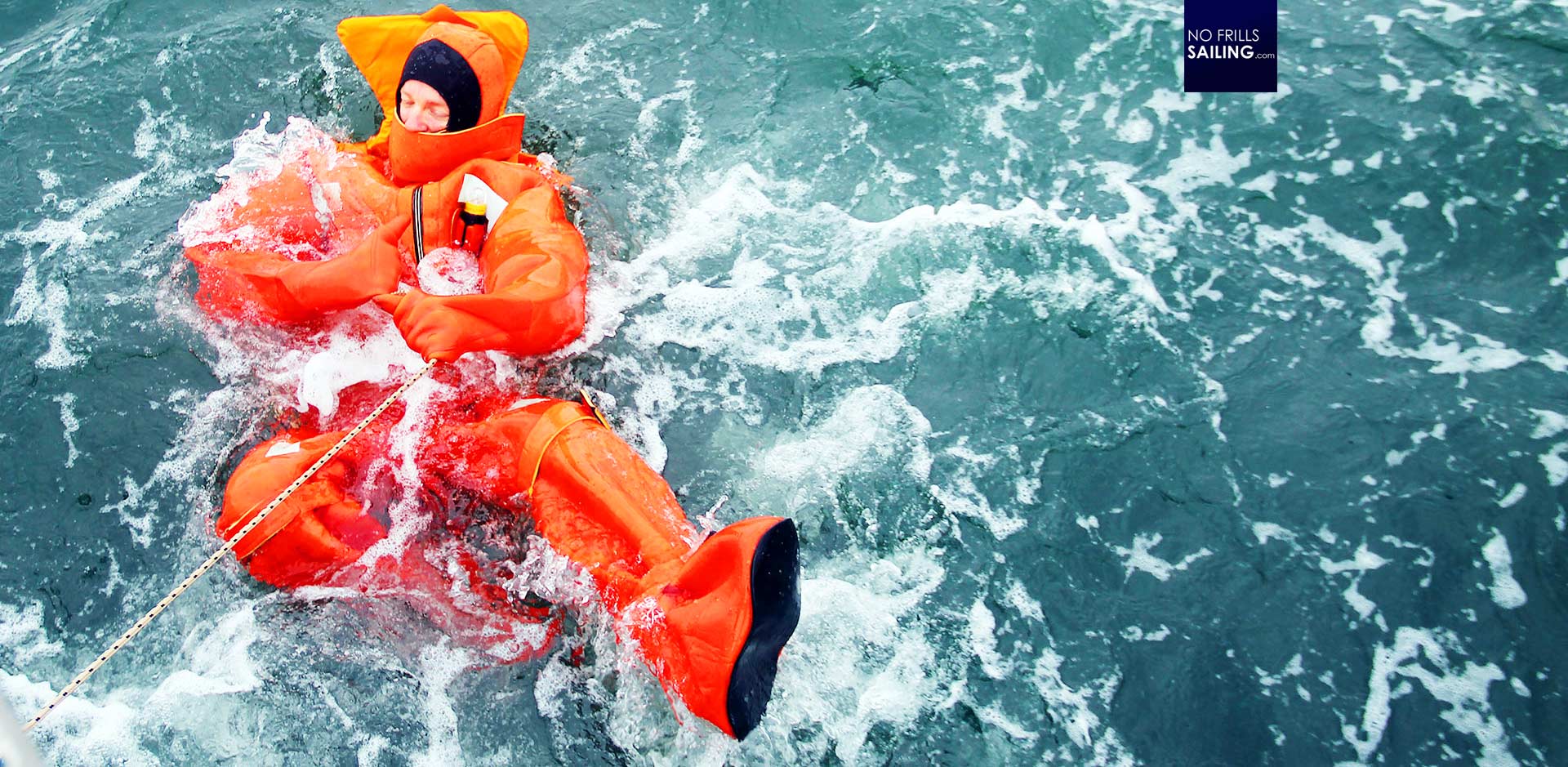
Well, I decided to do otherwise. First of all there is a kind of fireworks “ban” in place in Germany due to the infection control laws passed by our government. The fireworks-ban should instill a minimum of contacts between the people. The sales of fireworks has of course been stopped by the government as well and for some regions a general ban on using fireworks has been issued. If this is the case for my hometown – I really don´t know. And I don´t care to be honest. The reason I refrained from executing this experiment is quite different …
Legal obligations regarding distress signals for sailing yachts
First of all, let´s discuss the basics of distress signals at sea. For oceangoing boats having the means of signaling an emergency on board is a provision formulated in the SOLAS-guidelines and colision prevention rules. That encompasses the electronic distress signals via VHF, signals by visual means (flags), audio signals (horns) and – name it: The “exploding” and “burning” signals like rockets, flares, smoke and such. Let´s look at the latter.
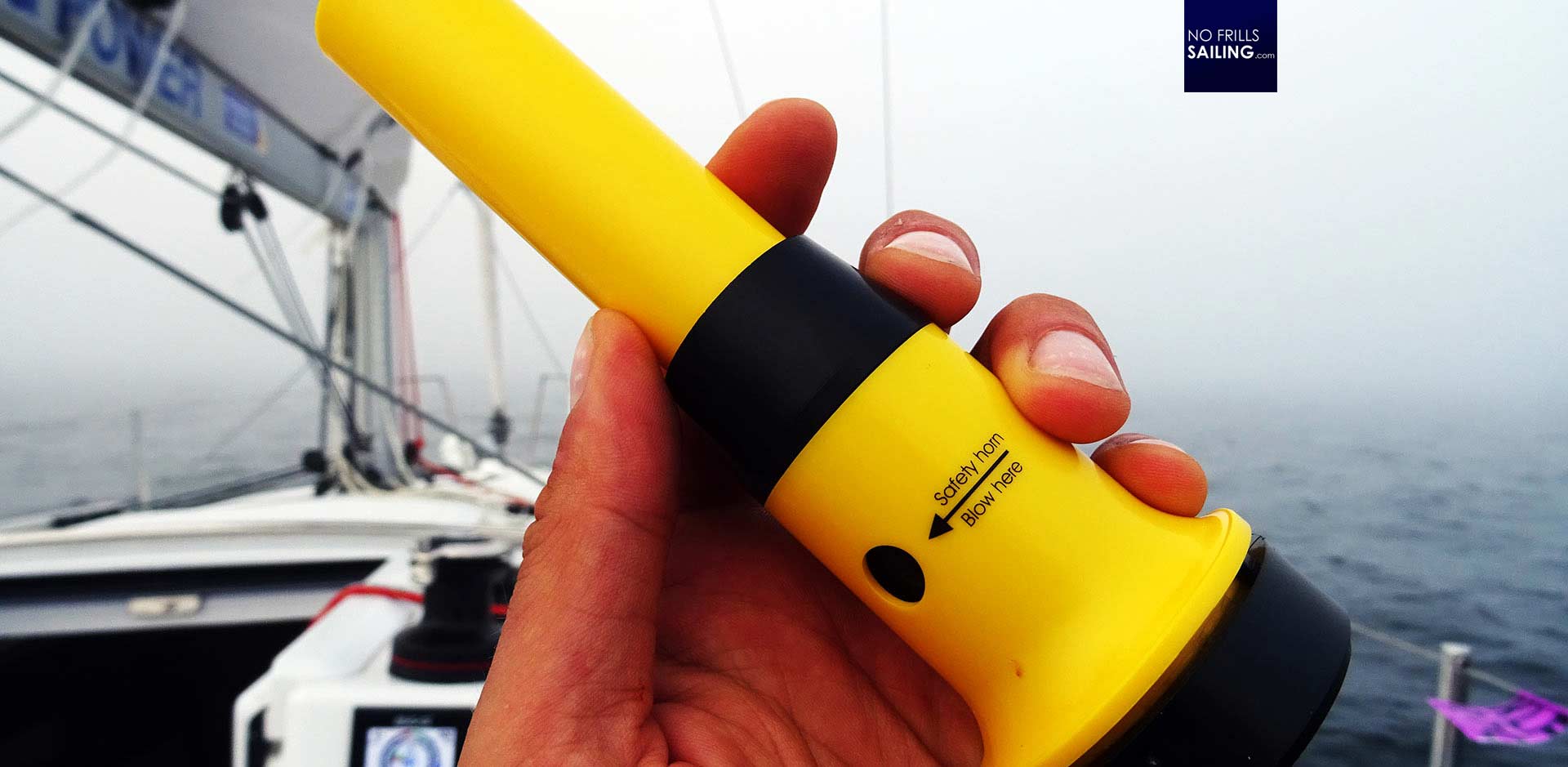
In Germany the state legislature differentiates between signals “fired by a gun” and signals which are not. In total one can say that in order to be allowed to buy and store distress signals on board – I mean the heavy duty rockets, flares or signals – the skipper need a “certificate of competence”. This certification is a one-day course to be take at a sailing school. Having this, one is free to get the “real stuff”. For all who do not have this competence, the at least can buy a so-called “Nico-Signal”, at which we will have a closer look later in this article. Sidenote: I do not have the certification but this is planned for the coming year.
Distress signals for sailboats: A detailed look
When I bought my first sailboat 4 years ago I had purchased the complete package with everything on board. That included a watertight, strong and thick plastic bin with “Distress Signals” printed on it. For this New Year´s Eve I´ve dug out this old joke from my basement. Having a watertight container for your distress signals is a must: Storing rockets and stuff that needs to be burning in a case of emergency dry and safe is absolutely essential to ensure that you reach it fast – and it fires 100 per cent. Moisture is a bitch and you do not want to have a misfire or spark failure when shit is hitting the fan …
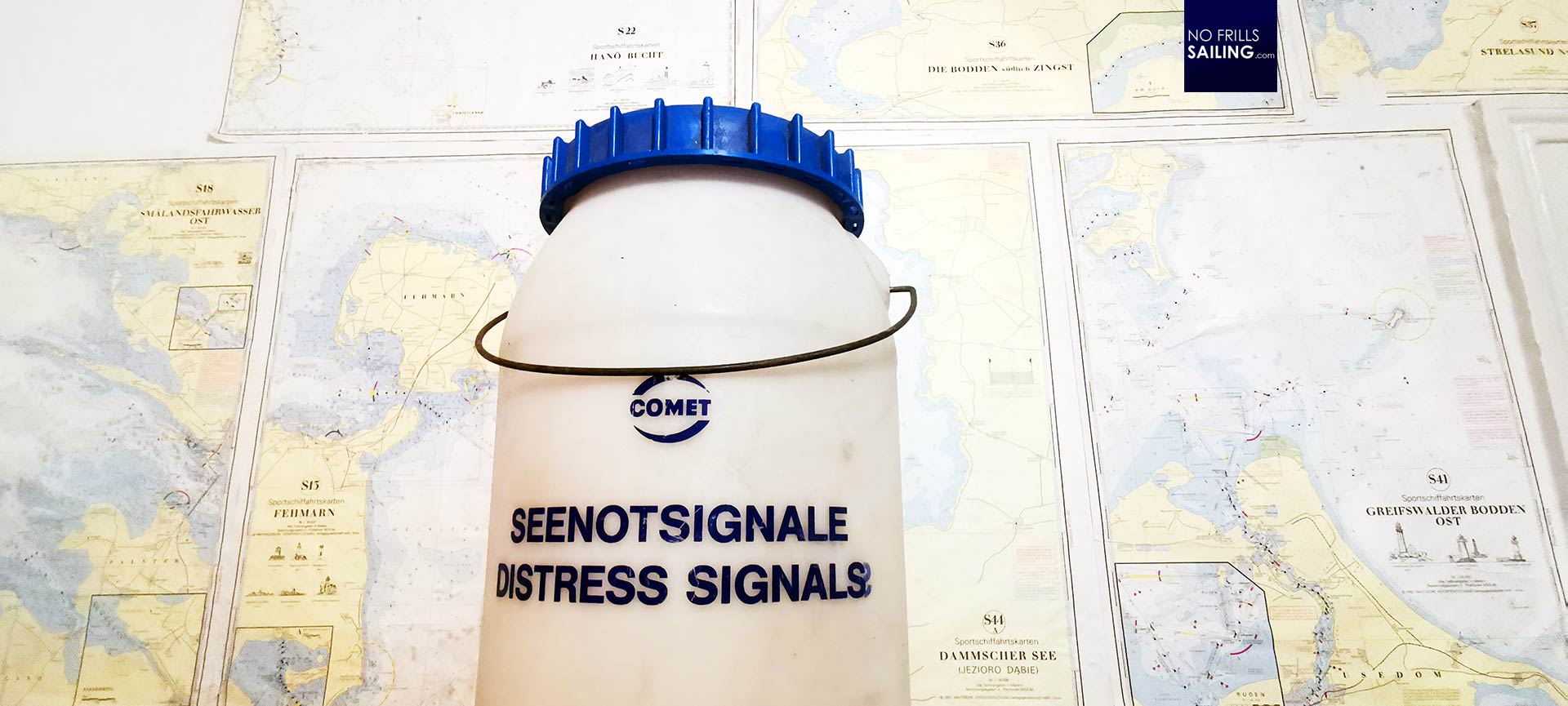
In my distress box I found the “heavy duty” stuff – four red flares and four red rockets. I would reckon this is the minimum equipment to be caried. Red signal means “danger to life” – a real skipper by the book should also have white signals as well which would be a mean of last resort to signal an imminent collision or trespassing. Green is used very seldom because it signals a clearing of a distress situation. So, minimum equipment for a boat is red (or orange) for the distress. Let´s look at the big rockets.
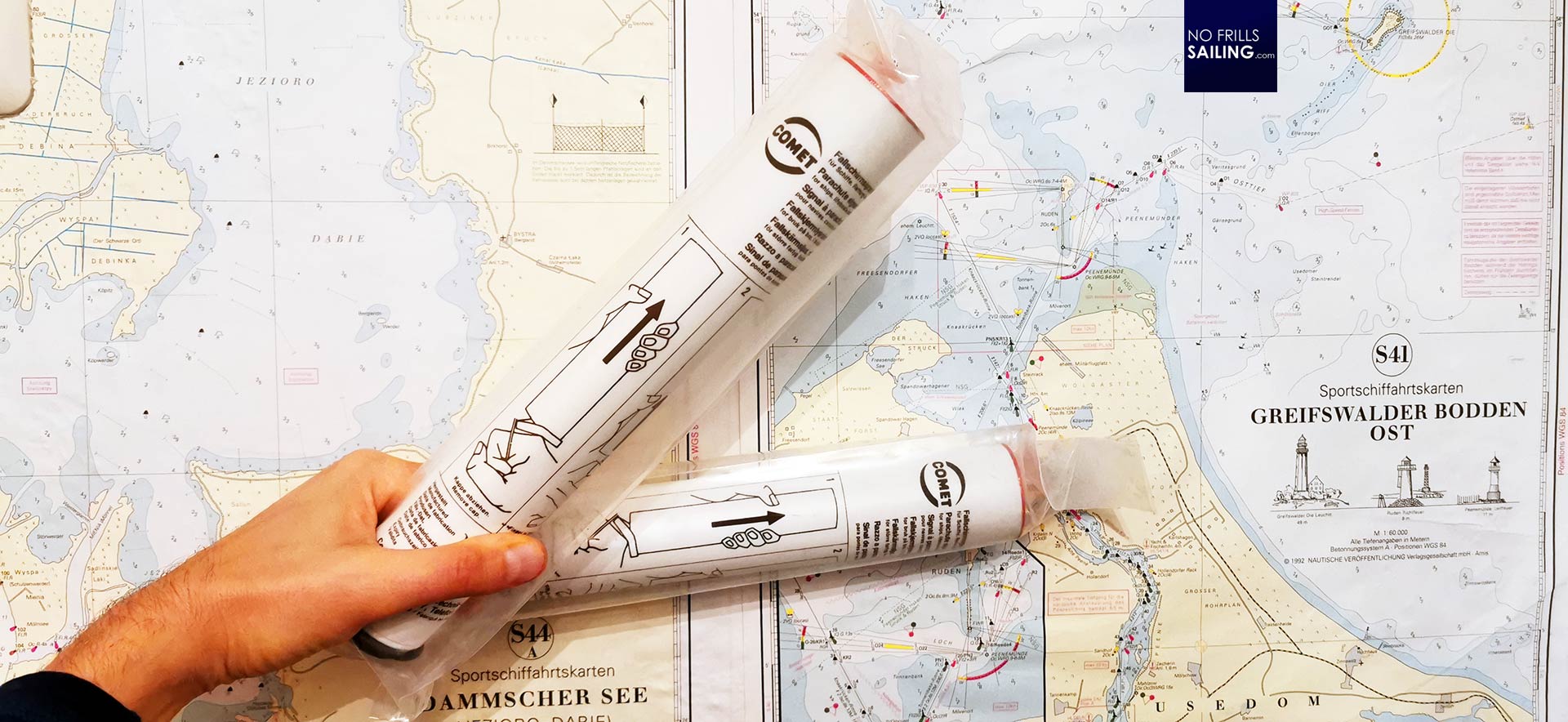
These are approximately a child´s armlength and very easy to use. It´s all depicted in easily understandable icons printed on the rocket itself. That´s for a reason: In case of emergency at sea everybody is allowed and entitled to use these distress signals (of course, in order to save lives) so the depiction is fool proof. Nevertheless, I recommend strongly to pass a course because imagining being in a dangerous situation, mast is down, boat is sinking, people are injured, a storm is raging … and then having to read the instructions and fire a rocket for the very first time is … disturbing, to say the least.
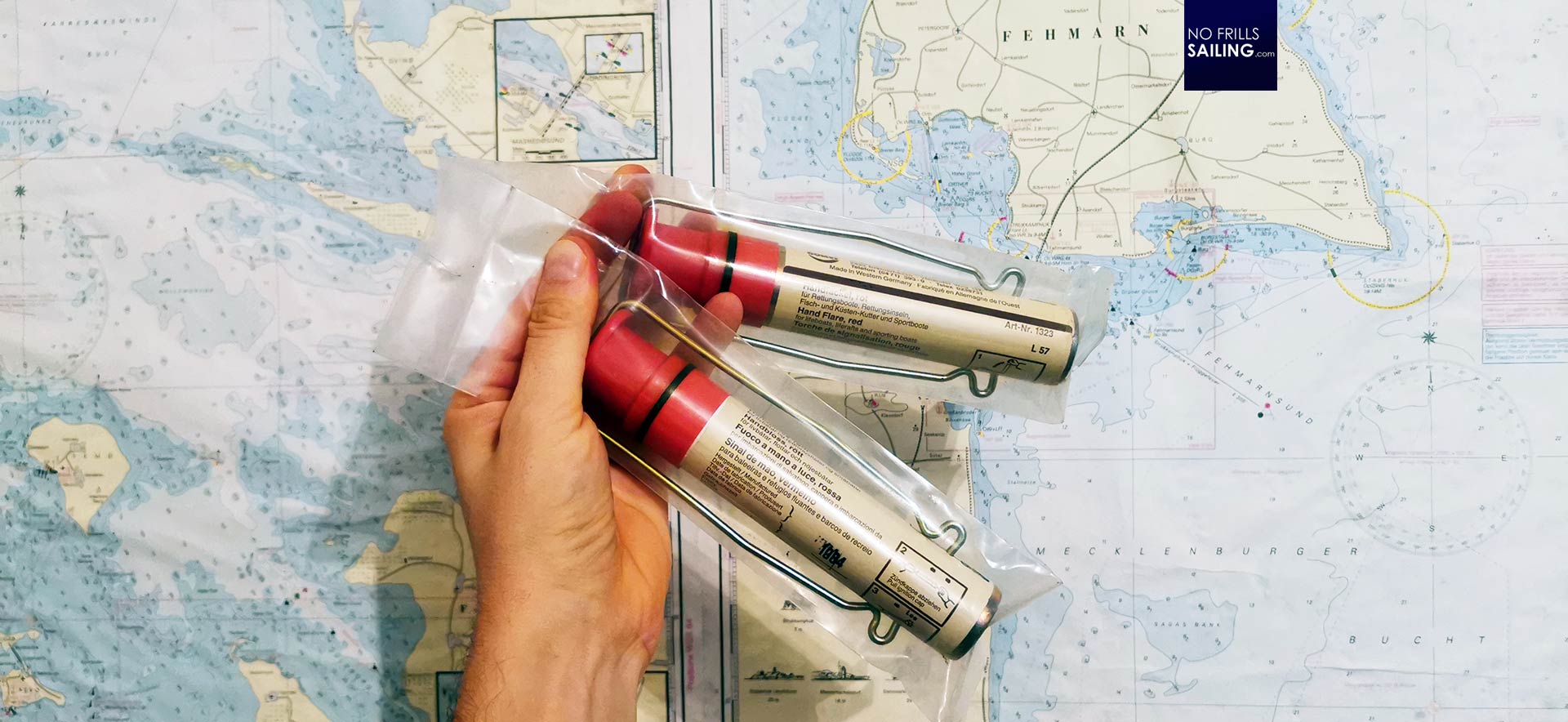
These signals are packed absolutely watertight in thick shrink-wrap plastic. That´s a second line of defense when it comes to storage. Remember for the safety concept of your own boat: It is absolutely necessary to have the distress signals stored dry and safe on the one hand – but at a place that is fast and easy to reach from the cockpit in case of an emergency. Waterproof packaging and storing is a matter of course.
The minimum: Nico Signal
One can go to a special shop for skippers and buy a so-called “Nico Signal” here in Germany. I am sure this product is also available in your country – or a similar device is offered. If not, check amazon and get it delivered. That´s because the Nico Signal is truly an ingenious invention, fool prove to use, easy and convenient. It´s basically a launcher onto which a 6-shot magazine is clicked. It is said to be waterproof up to 40 metres (so, storing the launcher is a bit easier).

To use it, one just have to pull a safety bin and press the large white trigger. The signals are said to rise to a height of up to 80 metres and burn as long as some 6 seconds. The brightness of 10.000 candela is quite much – but compared with the “real” heavy duty rockets, where you get a maximum height of 300 to 400 metres and a burning time of roughly (and more than) half a minute, it´s really just the absolute minimum!
In case of emergency: How to use distress signals
So, what to do when in distress? Well, hard to say because it depends on the case itself. But if you have to shoot rockets and flares, be aware that it only makes sense to do so if there is a real chance that your signals can be seen by anyone. If ships are in the vicinity, make sure you fire more than one rocket – imagine being on watch on a freighter, tired, bored, maybe diverted by paperwork. Your first rocket may not be seen clearly – maybe the officer of the watch just recognizes “something” in the corner of his eye. Fire a second rocket shortly after the first – and another one after that. Now the officer of the watch has a clear confirmation of a distress fired and secondly he is able to fix a bearing. Here´s the point: The Nico-Signal cannot be seen from afar, burns down very fast. A real rocket can be seen from very far and burns longer – a multitude in increase of your chances to attract attention!
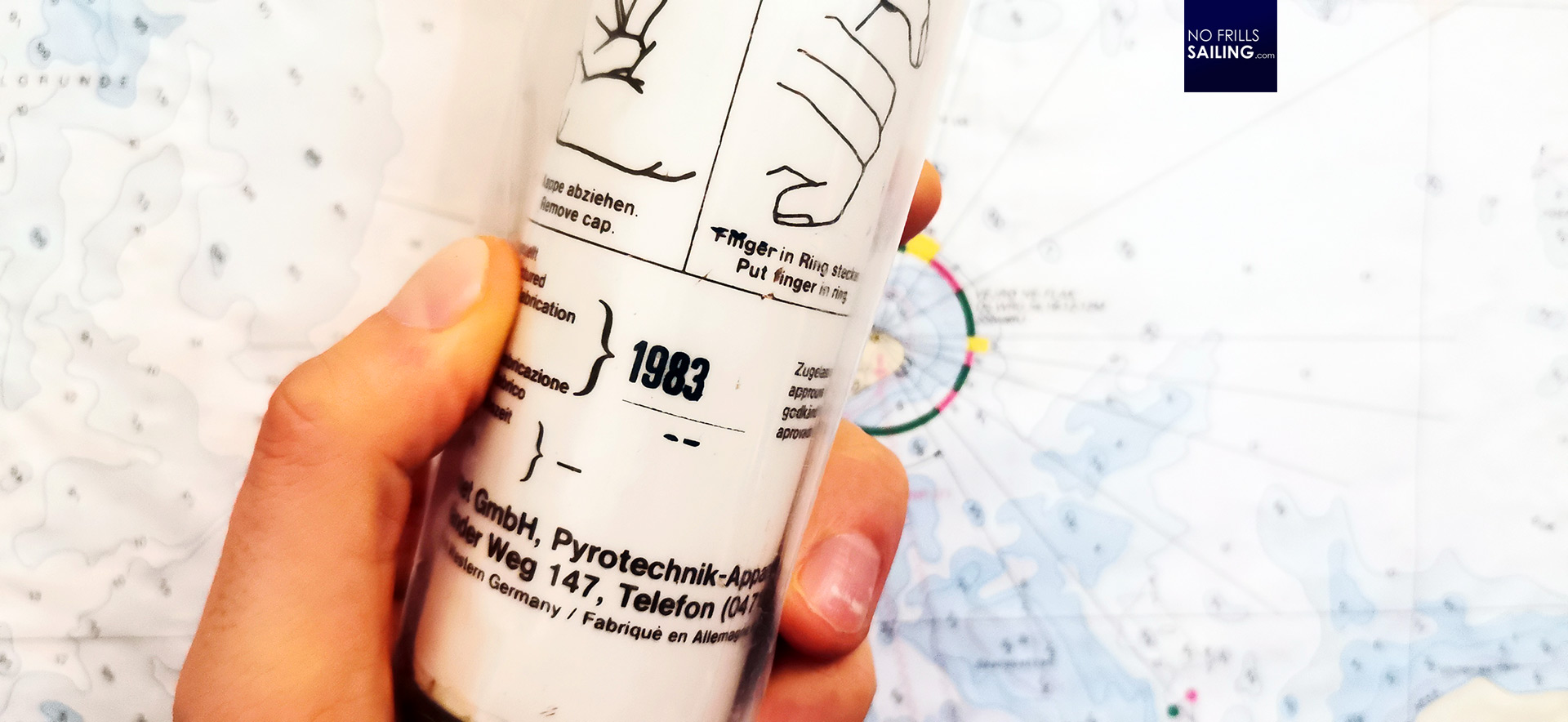
Well, for me, I´ve decided two things: First of all I am going to enroll in a certification course this year for sure, maybe in combination with a sea survival (World Sailing, ex-ISAF) course. And secondly, looking at the production date of my distress signals I refrained from shooting them tonight for New Year´s Eve – I was 4 years old when these rockets have been produced. The chances of getting my hand ripped apart or my face blown off are good when trying to fire these antiquities (although they look as if they were in pretty good shape). Getting my nose stoated by a doctor tonight would absolutely be a fitting closure to this damned year 2020 – but I´ll pass.
Have a safe, Happy New Year´s eve, dear readers.
You may also be interested in reading these related articles:
A yacht´s safety concept: How to
Person overboard – code of practice
